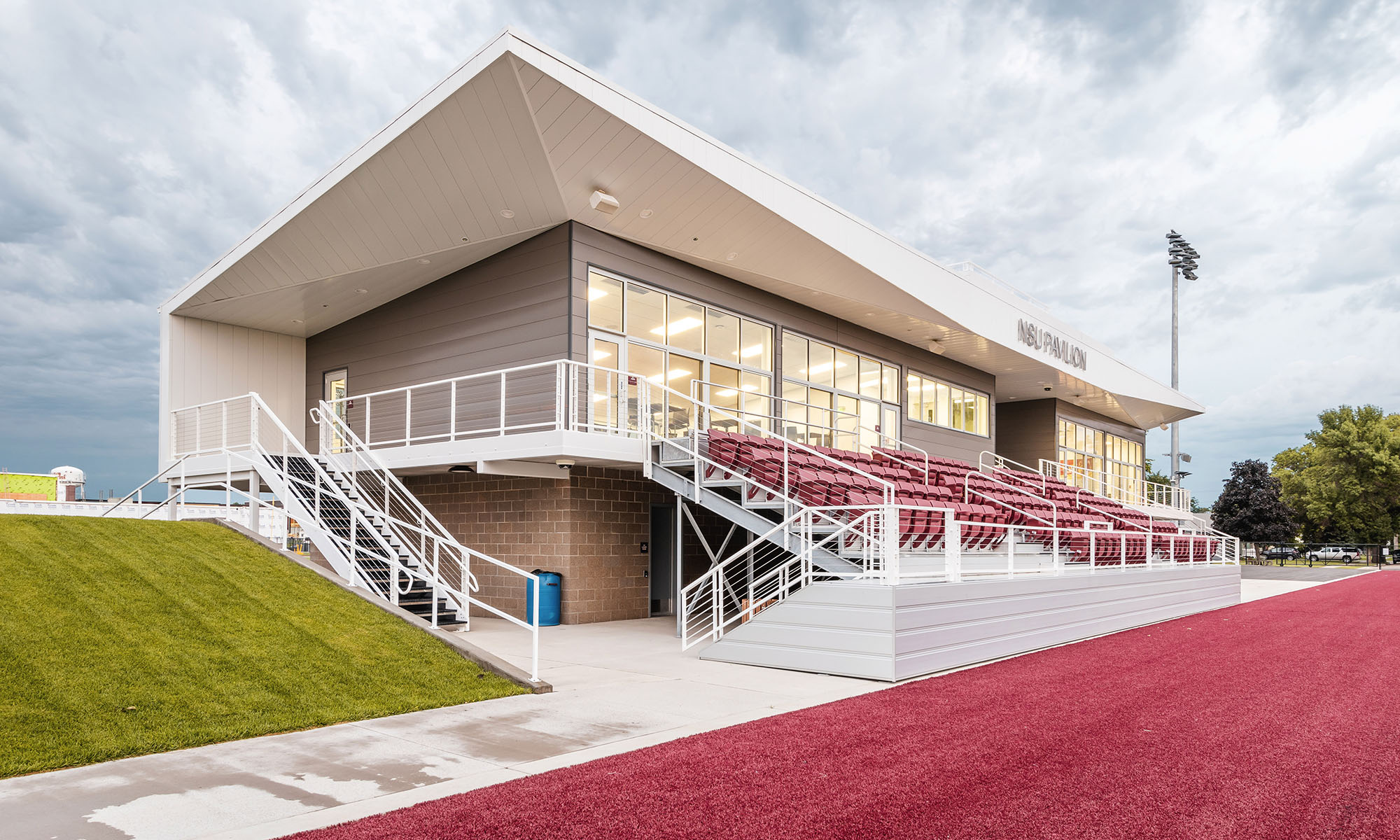This summer architects, artists, designers, students, and community members participated in the Sioux Falls Design Center’s GO DESIGN bus stop and shelter design competition. The competition encouraged visions of what sustainable, functional, and creative bus shelters and stops could look like for the Sioux Falls community. As part of the larger GOING METRO project, it served as phase 3 in a series of events hoping to facilitate creative conversations about transportation as the City of Sioux Falls seeks to innovate its transit system.
This post is the second in a series, featuring the submissions to the GO METRO competition.
Team Name: UTIL
Team Members: Eli Show and Angela Zonunpari
We believe that a good public transit system shows a true investment in the growth of a city and its people. It’s a climate, access, and equity issue; an interconnected/interdependent system of how a city provides its community the path to succeed, grow and be healthy. As someone who was solely dependent on public transportation for close to 25 years of my life, it provided me (Angela) with an early path to self-sufficiency, a reliable way to receive world-class education, and independence at a young age. For UTIL, this bus shelter design was an opportunity to envision the infrastructure of public transportation as a sustainable model—one that promotes equity, access, care, and longevity as we think of our city’s infrastructure, in general.
Our process for the bus shelter design revolved around finding ways to protect against and adapt to environmental changes, while taking into account practical elements of maintenance and use. We considered taking advantage of adding plant life to create a buffer from the elements—prairie grass as a way of blocking snow in the winter but allowing air flow on hot summer days. As we thought of the elements and more practical maintenance of the bus shelter, we decided to make the main structural frame an angled one that would resist/withstand wind, rain and snow by its composition alone while helping with drainage.
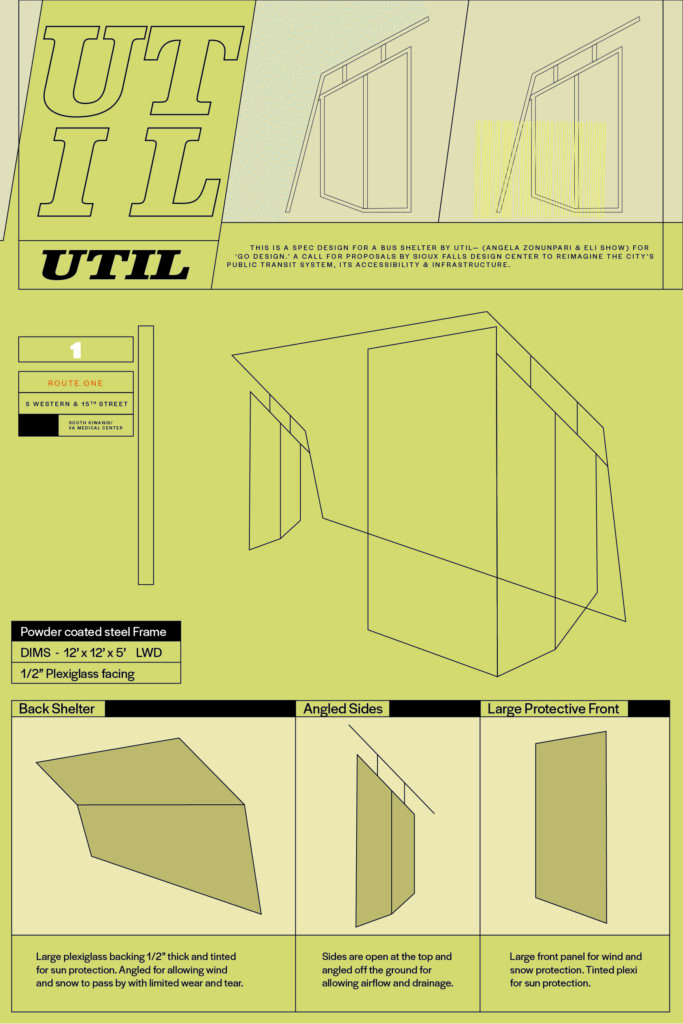

Having grown up and lived in New Delhi (India) and New York City, we believe that the amount of space (dimensions and frequency) dedicated to the structure of public transit plays a significant part in inviting people to use the service consistently. We designed the structure with scalability in mind. The use of polycarbonate takes into consideration visibility for commuters and drivers alike, while keeping in mind safety and natural light. The simplicity in the design with more intentional design elements addressed our thoughts around build and maintenance costs.
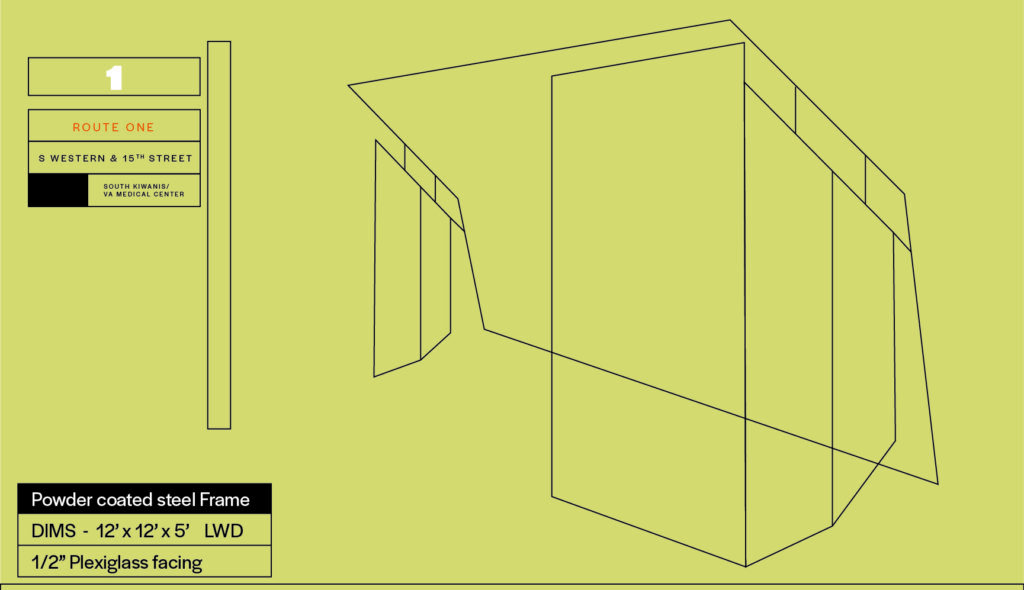
There are a few ideas around engagement and interaction we added to our design, including a city-funded art and design backlit display within the shelter that has potential to create community interest around the space itself. To address the lack of signage and access to information at bus stops and shelters around the city, we added in box signage along with more prominent stop signage. These boxes should detail out all the routes available to commuters, while giving them confidence to navigate and regularly use the public transit system.
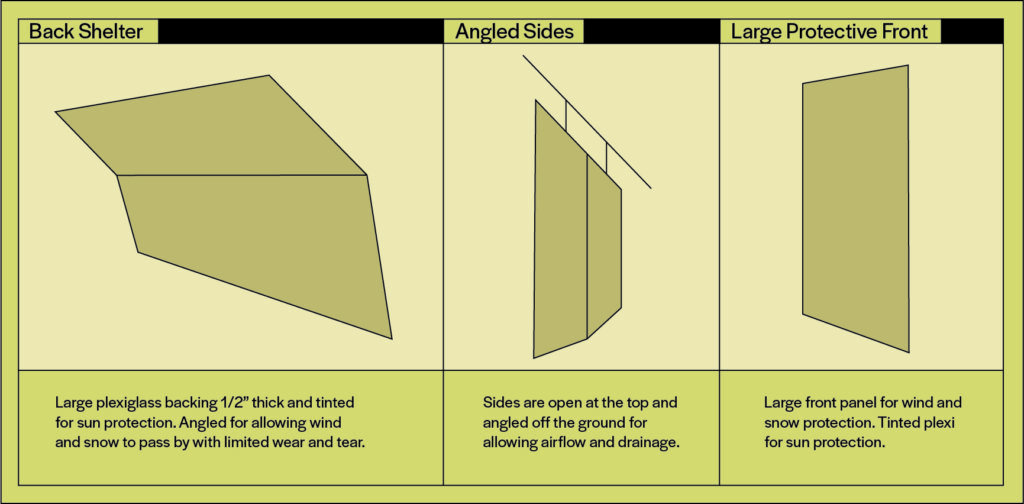

Eli Show and Angela Zonunpari of UTIL work on diverse projects together including No Business Magazine, art installations, and furniture design. No Business Magazine is an arts and culture publication heavily based around concepts informing design, function and interactivity of each issue. As extensions of both their art practices, they have collaborated on installation works that create functional spaces of interaction using distinct furniture builds to encourage contemplation.
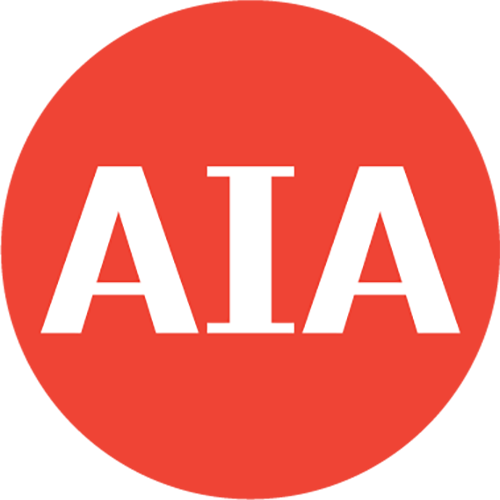
The Communication Committee is comprised of volunteers of AIA South Dakota and are dedicated to the mission of the Blueprint South Dakota blog. Our goal is to build strong South Dakota communities and to connect ideas and expertise to address challenges in our state. Through the curated content of this site, we want to find a blueprint for better cities and towns.
